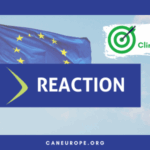In the climate policy world, all eyes go to the ongoing UN-led negotiations and the ucpoming COP21 in Paris. Nevertheless, 2016 will also be a crucial year for climate as the debate around the reforms foreseen by the Energy Union Strategy will start for real.
The Energy Union is a political concept coined in April 2014 by the then prime minister of Poland, Donald Tusk. It was proposed in the context of concerns for the security of Europe’s energy supplies because of the Ukrainian crisis. But the Energy Union should first and foremost be seen as an opportunity to reduce energy demand and move towards a 100% renewable energy system. If the EU wants to take its fair share in global climate action go beyond its disappointing INDC submitted before Paris, this reform needs to rely on several crucial elements.
Put emphasis on climate change challenges
The Energy Union Strategy makes no mention of the overall adequacy of the EU’s plans as compared to the action needed to tackle climate change. Climate protection is not an option to be potentially included in an energy security strategy, it is a commitment that needs to be clearly expressed in the ambitions and policies of the Energy Union. It requires long term thinking and recognising that the EU’s energy system will need to be totally decarbonised and 100% renewable energy based before 2050, a timeframe barely mentioned in the Commission’s communication. This is also a social imperative, since 18,400 premature deaths a year can be attributed to coal power plant emissions, and coal pollution related illnesses result in health costs of €15.5-43.1 billion a year in the EU.
Really moving away from fossil fuels
Despite having the goal of moving ‘further away from an economy driven by fossil fuels’, the Energy Union’s vision is undermined by focusing on fossil fuels, mainly on gas, and not prioritising renewable energy and energy savings. Despite a clear downward trajectory on gas, Member States have suggested a €26 billion investment in gas and oil infrastructure through the Juncker Investment Plan, European Fund for Strategic Investments (EFSI).
Even though member states have identified €624 billion of low carbon investment projects that could be considered for funding in the €315 billion EFSI, the first projects supported under this Fund include both energy efficiency projects and fossil fuels. This kind of approach means the Union risks a massive lock-in of fossil fuel assets with clear social, environmental, and economic consequences.
In addition, coal, the main source of emissions in Europe is not even mentioned. If the EU doesn’t clearly establish the need to phase out quickly coal, emissions would still be high and the entire low-carbon policy would be deeply compromised.
‘Energy Efficiency first’ must become a reality
The International Energy Agency’s view that energy efficiency is the world’s’first fuel’ and this is still to be translated into EU action. The Climate and Energy Commissioner has publicly supported the ‘Efficiency First Principle’, but the Commission has not elaborated yet how this principle will be applied to ensure that investments in energy efficiency are systematically prioritized, whenever they are more cost effective.
Acknowledging the low ambition of the 2030 energy efficiency target adopted by the European Council in October 2014, by proposing a target within the EED review expected in 2016 that really reflects the significant potential of energy efficiency, would give the indication that the narrative is becoming a reality. A 40% energy savings target is needed to help Europe tap into its significant remaining energy savings potential, which in turn can deliver the full range of benefits to Europe’s economies and citizens.
The implementation of renewables must be tangible
The Energy Union strategy explains that ‘Europe’s leadership in the transition to a low-carbon economy needs to continued, assuming the EU is still the world leader, while, at least for renewable energy, it actually lags behind many countries.
Between 2008 and 2011, China overtook the EU as the number one renewables manufacturing region in absolute terms, as China’s sector grew by 30% while the EU’s declined by 5%. As a result, China gained 1.7% of its GDP from renewable energy, while the EU only 0.4%. In addition, European investments in renewables are slowing down, despite being on the rise in other major economies, including the USA and China. In 2014, the EU added just 7 gigawatts (GW) of photovoltaic power plants, while China added 10.6 GW and Japan 9.7 GW. Similarly, China added nearly double the EU’s new installed capacity of wind power in 2014.
Maximising deployment within an Energy Union must be recognised as a central element of Europe’s goal to lead the world in renewables. In a 2014 analysis, Greenpeace showed that strong EU policies on renewable energy and energy efficiency that resulted in 45% share of renewables in 2030 could reduce the need for energy imports by 45 per cent by 2030, compared to current climate and energy targets. Specifically, Europe could avoid annual imports of about 90 billion cubic meters of gas and 1.3 million barrels of oil by 2030, while no imports of coal would be needed at all.
The Energy Union was presented as the flagship project by European Commission President Jean-Claude Juncker at the beginning of his term. With 2016 being the year that most of the laws and policies required to solve the Energy Union puzzle will be put forward, there is indeed a significant opportunity for the EU to accelerate the energy transition and deliver on the vision to move away from an economy driven by fossil fuels. This will ensure that EU’s climate and energy policies match today’s realities.
Gaétan Arnould is intern at CAN Europe
Sources
https://caneurope.org/can-and-press/913-coherent-and-strong-laws-needed-to-solve-energy-union-puzzle
http://www.politico.eu/article/energy-union-momentum-european-commission-flagship-project/
http://ec.europa.eu/priorities/energy-union/docs/energyunion_en.pdf
http://www.euractiv.com/sections/energy/eu-wide-energy-governance-plans-lack-teeth-316107
http://d2ouvy59p0dg6k.cloudfront.net/downloads/final___wwf_energy_union_response_briefing.pdf
http://www.energypost.eu/limits-energy-union-expect-pragmatic-progress/



